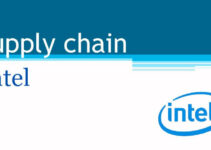Reverse logistics is the method of recovering and retrieving material and goods from customers and bringing them back to the manufacturer to extract value from it as after-sales service. The reverse logistical process is different for different companies, it comprises of gathering, disassembling, and processing used material and goods to amplify value and improve environmental sustainability. Today, we’ll discuss Coca-Cola reverse logistics, process; its definition, and the key elements involved in the process.
What is Coca-Cola Reverse Logistics?
Coca-Cola reverse logistics focuses on efficiently employing the recycling process to achieve sustainability in the supply chain process. It allows them to decrease wastage and the usage and production of plastic bottles, rather than reusing them. However, the objective of the reverse logistical process of Coca-Cola is to efficiently recycle its products. It comprises of gathering used bottles and goods from the end consumers for remanufacturing, refilling, and recycling.
The reverse logistical processes of Coca-Cola not only improve environmental sustainability but also amplify the operational and financial performance of the company. For instance, the recycling unit of the company offers them an opportunity to decrease the remanufacturing cost of bottles, when the company could reuse the package material repetitively.
The reverse logistical process is a form of business activity that comprises IT, administrative, and operational processes. It allows you to deal with the returned merchandise and logistical support within the SC network in the most efficient and effective way.
Key Elements of Coca-Cola Reverse Logistics
Some of the key elements of Coca-Cola reverse logistics are as follows;
Coca-Cola Recycling LLC
Coca-Cola Recycling LLC is a separate division that the company has established and it focuses on retrieving, recovering, and recycling of used products. It is engaging in recycling programs to serve the North American market.
Stock Control
The reverse logistical process helps them to control their stock effectively. It is because the returned packaging material would you a key insight into the consumption of the product in the specific time period. It would help the company to amplify the inventory control relevant to meet the sales demand of the customers based on the data key insight.
Full Responsibility
Coca-Cola takes the complete responsibility of gathering and recycling the packaging material and bottles for reuse. It allows the company to avoid the trend of single usage of plastic bottles, and ultimately it decreases environmental waste.
Cost Saving
The reversal process helps the company to save costs because the company is reusing the same material repetitively. Resultantly, it helps the company to decrease the retail price for customers and gain a competitive edge over competitors in the market.
Returnable Cycle
The reverse logistical process means that Coca-Cola is effectively dealing with the used products and efficiently reusing them. It allows the company to develop a returnable cycle, where the customers keep on reusing the packaging and returning it back to the company for recycling.
Zero Waste
Coca-Cola has recently launched the project “World without Waste” by the end of 2030. The objective of the project is to gather, recycle, and reuse roundabout 100% of its packaging material. It would help the company to align itself with the environmental sustainability trends.
Partnership with JD.com
Coca-Cola has partnered up with various recycling companies, and JD.com is among them. JD has a very large logistical system and it allows the company to gather and recycle the used bottles from across the country. This decreased the millions of paper that is used for disposable packaging.
The partner company initiated the project “Green Stream Initiative” in 2017, and it helps the company to decrease the environmental impact of logistical activities and processes.
PET Material
Coca-Cola and its recycling partner companies have realized the fact that package waste is a collective problem and they should approach it collectively. It has become possible through PET (polyethylene terephthalate plastic), which allows them to reuse the same material and develop other products.
The recycled PET material would help you to develop courier uniforms and other lifestyle products with the same material. It focuses on helping people to comprehend the value of recycling and change their behavior in their daily routine life. However, it comprises of recycling, organizing waste, and achieving sustainable consumption.
Sustainable circular Economy
Coca-Cola and its partners have developed a sustainable strategy by the name “Green Stream Initiative.” It focuses on encouraging people and the mass public to follow recycling and responsible consumption in their routine lives through reverse logistical processes. It would help them to engage in the sustainable circular economy.
Conclusion: Coca-Cola Reverse Logistics
After an in-depth study of Coca-Cola reverse logistics; we have realized that the reverse logistical process plays a significant role in the company’s sustainable strategy. If you are learning about the reversal logistical process of Coca-Cola, then you should keep in mind the abovementioned elements and process.
Ahsan is an accomplished researcher and has a deep insight in worldly life affairs. He goes Live 3 days a week on various social media platforms. Other than research writing, he’s a very interesting person.


